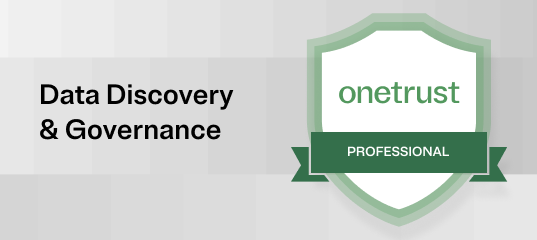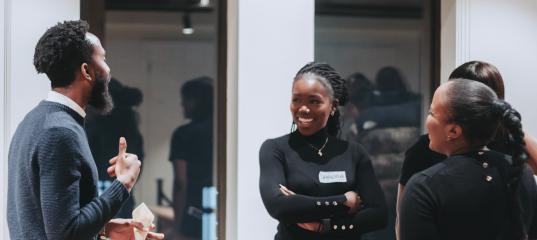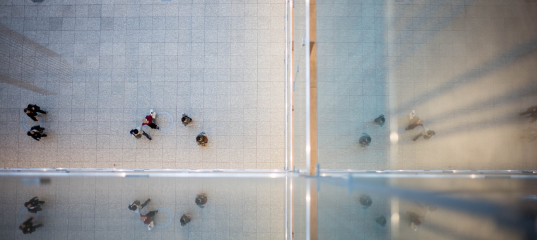Oct. 12, 2023
GO THERE: Join us at TrustWeek 2024 to see where trust can take your business
-
Trust Intelligence Platform
-
-
Explore Our Clouds
-
OneTrust Community
-
TrustWeek
Join us for our annual conference and discover where trust can take your business
-
Connect Workshops
Connect globally, network locally
-
Company
-
Join our team
OneTrust is a certified Great Place to Work
-
Newsroom
Get the latest news, announcements, views, and more
On-demand webinar coming soon...
On-demand webinar coming soon...
Episode 2: Blowing the whistle on the Space Shuttle Challenger disaster

About this episode
In 1986, Allan McDonald was the head of the Space Shuttle Solid Rocket Motor program at Morton Thiokol, the company that built the rocket boosters for NASA’s Challenger Space Shuttle. Allan warned NASA management that the space shuttle Challenger was at risk of exploding. They didn’t listen and the world watched the disaster unfold on their TV screens.
James R. Hansen, author of Truth, Lies and O-Rings: Inside the Space Shuttle Challenger Disaster, tells Allan’s story, and Jisha Dymond, OneTrust’s Chief Ethics and Compliance Officer, explains how NASA's workplace culture contributed to the disaster.
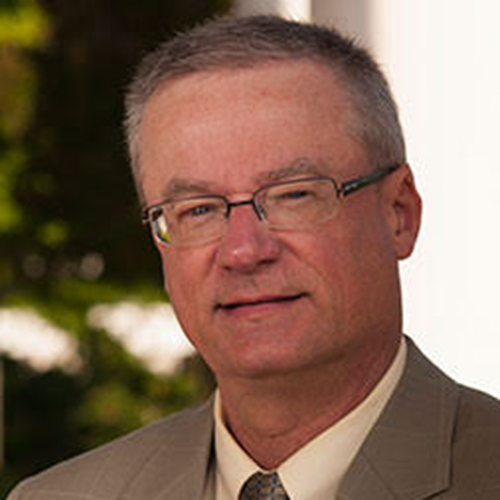
Guest
James R. Hansen

Guest
Jisha Dymond
James R. Hansen is a professor emeritus of history at Auburn University. A former historian for NASA, Hansen is the author of fourteen books involving air and space exploration including Truth Lies and O-Rings: Inside the Space Shuttle Challenger Disaster.
Jisha Dymond is OneTrust’s Chief Ethics and Compliance Officer.
Speaker 1:
T minus 20 seconds and counting.
Speaker 2:
Booster Engine Gimbal now underway. T minus ten, nine, eight-
Shalene Gupta:
Seven men and women boarded the Space Shuttle Challenger on January 28th, 1986.
Speaker 2:
Lift off of the 25th space shuttle mission. It has cleared the tower.
Shalene Gupta:
Their mission was to deploy a new satellite and study Halley's Comet.
James Hansen:
I was in NASA, in the archives, working on a book, and a friend of mine runs into the archives and said, "Jim, the Challenger just blew up."
Shalene Gupta:
Just 73 seconds after launch, the shuttle exploded, killing everyone on board.
James Hansen:
So I ran down to the room in the building that had TVs and immediately saw the coverage.
Shalene Gupta:
James Hansen is a historian of science and technology and expert in aerospace history. He wrote the book, "Truth, Lies, and O-Rings: Inside the Space Shuttle Challenger Disaster." Of course, it's not just a story from the history books for James. He was there. He remembers that Challenger Launch felt special to America. This was the first time a civilian was traveling into space. NASA had run a national competition and awarded the honor to a young teacher named Christa McAuliffe. She was selected from a pool of more than 10,000 applicants.
James Hansen:
To have her part of the crew when this terrible, terrible thing happens, it made it a much bigger deal. She was one of us. Everybody felt like they had a major loss in their own family, and the story became, "Well, what happened? How did this happen?"
Shalene Gupta:
Answering that question revealed much more than a technical malfunction. The inquiry exposed a deeper problem, an organizational culture issue, a breach of trust that paved the way for disaster. I'm Shalene Gupta. This is Trustonomy, an original podcast from OneTrust. In each episode, we examine stories from the past, moments when companies and organizations broke that crucial element, trust. These are fascinating and sometimes tragic stories, but they also show us how businesses and organizations can do better today. We're learning how to build and repair the superpower of trust. This time with the Challenger story, we're looking at what happens when employees feel empowered to speak up, what happens when they don't, and how you can create a culture in your business where that can happen.
Jisha Dymond:
It's not just about saying what you want when you want to say it, but it's also how the company reacts to it.
Shalene Gupta:
That's Jisha Dymond. She's going to help us draw lessons from the Challenger story. But first, we need to revisit the critical 24 hours before the launch to understand how the crisis might have been averted. James Hansen's journey into the Challenger disaster began with a call from Allan McDonald. Allan McDonald passed away in 2021 at the age of 83, but he'll forever be remembered for the work he did on the space shuttle. Allan was an engineer at Morton Thiokol, the company that built the rocket boosters for NASA. You've seen those huge tanks on the side of space shuttles, the tanks full of fuel. Those are the rocket boosters that Morton Thiokol built, a huge responsibility, and Allan was the head of that program.
James Hansen:
Al got in touch with me after I had done the Neil Armstrong biography. He had prepared 2,500 pages of manuscript that he wanted help in turning into a readable book. It was really important for him to go on the record and to say something that would be lasting about what had happened.
Shalene Gupta:
What did happen that winter day? To begin with, you first need to understand what NASA was like in the 1980s. NASA was a very confident organization, and with good reason. These are the people who won the space race in the 1960s and put humanity on the moon. That triumph led to the shuttle program. The shuttle was the world's first reusable spaceship. It represented a new era of space travel, one that would make space flight more routine and might one day make the final frontier accessible to everyone. NASA's first step towards making that dream a reality was adding more missions to the launch schedule. Unfortunately, there were a few hiccups. Missions had to be rescheduled, so by the time the Challenger was ready to launch Christa McAuliffe into orbit, NASA was already feeling pressure to keep things on track.
James Hansen:
The Challenger was supposed to go up a couple of days earlier. There was problems with strong winds that scrubbed and delayed the launch. Then there was a problem with the door handle in the orbiter. That was also a problem.
Shalene Gupta:
Then there was another complication.
James Hansen:
Allan gets a call from a friend. The friend tells him that he just heard a weatherman in Orlando, on a TV station, predict that the temperatures in Central Florida were going to be quite frigid and maybe down into the mid-teens, which was really unheard of for that part of Florida. Well, when Allan heard that, he immediately starts worrying.
Shalene Gupta:
Why is Allan worried about a bit of cold? The danger here has to do with something called an O-ring. The O-ring is the rubberized seal that sits between segments of the rocket booster. A year earlier, Allan and his team at Morton Thiokol discovered that the O-ring malfunctioned in colder temperatures. In previous tests, there was evidence that some soot had even got through the O-ring seals during a launch.
James Hansen:
They just froze and became not so rubberized, not so elastic, and they had to be in order to seal those joints properly. Some of the hot gases could get through a seal. So the data was a little scary.
Shalene Gupta:
If the seals broke down and burning propellant leaked outside of the casing, well, it doesn't take a rocket scientist to imagine what would happen next. Further inspection revealed that the O-rings started to fail at 53 degrees Fahrenheit. Morton Thiokol reported the issue to NASA. So when the forecast on the day of the launch was supposed to be 22 degrees, cold enough to produce ice on the launchpad, Allan is understandably concerned.
James Hansen:
So he gets on the horn back with Morton Thiokol and says, "We need to get our engineers together and really talk through this because this temperature is different than anything we've ever launched in before. Why don't we, in fact, do a teleconference?"
Shalene Gupta:
The history of teleconferences isn't usually all that exciting, but this one was momentous. On January 27th, the day before the launch, Morton Thiokol's engineers in Utah called NASA. Allan McDonald was on location for the launch at the Kennedy Space Center, so he wasn't in the room with the other Morton Thiokol engineers. He joined the call from Florida. The teleconference was, in a way, the first spark that led to the Challenger disaster.
James Hansen:
The Morton engineers recommend strongly that NASA not launch the shuttle.
Shalene Gupta:
After all the delays, this is not what NASA wants to hear.
James Hansen:
A man named Lawrence Mulloy, Larry Mulloy, who's a program manager, a NASA guy, he's questioning, "I mean, this data to us seems a little bit muddled. We're not really clear about this whole issue."
Shalene Gupta:
The conversation takes a critical turn here. NASA stops asking the engineers, "Is it safe?" and starts asking them to prove the launch isn't safe. He wants them to give conclusive evidence that the O-rings will fail.
James Hansen:
That's flipping the logic of the engineering launch decision on its head. I mean, their entire experience as engineers and working with NASA has been, "You have to tell us it's safe. Is it safe to launch?" It goes against all of their training, all of their education, all of their experience.
Shalene Gupta:
The engineers, to their credit, pushed back and kept warning them that.
James Hansen:
This could be catastrophic. We could lose an orbiter. We could lose a crew. We could lose a launchpad.
Shalene Gupta:
Hearing all that, NASA's Larry Mulloy says-
James Hansen:
"My God, Thiokol. You want me to wait until April to launch?"
Shalene Gupta:
The call had escalated from an engineering report to a real confrontation.
James Hansen:
They actually said very specifically, "We are appalled by this recommendation by you." Thiokol's engineers in the room realized that NASA's not happy with this decision.
Shalene Gupta:
An unhappy client the size of NASA would give anyone pause, but Morton Thiokol management had also heard rumors that NASA was looking for a second supplier for their rocket boosters. If that happened, they could lose millions. So the folks at Morton Thiokol in Utah ask for a five-minute caucus to hop off the call and talk things over privately. Allan's in Florida, so he's not in the private meeting with the rest of his team. Once they're off the call, the Morton Thiokol managers turn to their engineers and say-
James Hansen:
"Look at it from the point of view of the company as a whole. Put on your management hat, take off your engineering hat, and look at it from our point of view. What do we need to do to make NASA happy?"
Shalene Gupta:
In other words, stop looking at this from an engineer's perspective, and think about this as a business decision.
James Hansen:
That's a breaking of a trust, a very vital trust between colleagues. I can imagine that there was some strong vocal expressions of dissent from the engineers.
Shalene Gupta:
The five-minute break turned into a half-hour debate. When the teleconference reconvened and they got back on the phone with NASA, Morton Thiokol had changed their story. They were now recommending to go ahead with the launch.
James Hansen:
Al was astonished. He had no idea what could have happened during that caucus, but he really was stunned and so surprised by the result that he was almost speechless.
Shalene Gupta:
But NASA was happy Morton Thiokol changed their position.
James Hansen:
NASA didn't ask them, either, why you're changing. I mean, if they were really concerned about the data, they'd say, "Well, what did you find in the data that changed your mind?" They didn't even ask that question. But what they did do, which gives away a lot, is that Mulloy said, "What we want now is a written statement where you are telling us that Morton Thiokol has approved us going ahead to launch."
Shalene Gupta:
NASA had never requested written approval from Morton Thiokol before. Sign-off had always been verbal. Hearing this, Allan suspects that as the head of the rocket booster program, he'll be asked to write up the approval.
James Hansen:
Allan made it clear, "I'm not going to do that. If you want it done, you're going to have to do it yourself." He wouldn't want to be the person that had to stand in front of a board of inquiry to explain why NASA launched the shuttle outside of the qualification of the solid rocket motor.
Shalene Gupta:
His managers at Morton Thiokol penned the approval, but Allan was the boots on the ground in Florida for his company.
James Hansen:
Well, Al had no choice but to go and pick it up from the fax machine and hand deliver it. I mean, it was not something he wanted to do and probably regretted the rest of his life.
Shalene Gupta:
The launch was scheduled for nine o'clock the next morning. Excited, bundled up onlookers gathered near the Kennedy Space Center, as a crew go out twice to knock ice off of the rocket boosters.
James Hansen:
The weather is so bad. Allan is still in disbelief that there can be a launch. When he arrives, he's confident that they just can't launch in these conditions.
Shalene Gupta:
Meanwhile, the rest of America is full of anticipation. TV cameras are trained on the shuttle, ready to capture this historic moment. Teacher Christa McAuliffe is about to become the first civilian to go to space.
James Hansen:
Children in schools all across the country had the televisions rolled into their classrooms. They were all chanting, "10, 9, 8." They were counting the countdown and cheering as it went up. ABC News, I think, had done a story where they were in the classroom with Christa McAuliffe's students watching the TV during the launch. To see the expression on those kids' faces when that shuttle exploded was just unbelievable.
Shalene Gupta:
The whole country goes into a kind of shock, but Allan McDonald feels something else.
James Hansen:
He feels such a strong sense of responsibility. Allan's thinking about his own family because he knows his children and wife are watching. They are proud of what their father has done for the space program, and now this has happened.
Shalene Gupta:
What could have changed things? What might've saved those lives? The public wanted answers, too. Within 24 hours, President Reagan launched a commission to find out what went wrong, the Rogers Commission.
Speaker 6:
Ladies and gentlemen, I now would like to call this first meeting of the Presidential Commission on the Space Shuttle Challenger Accident to order. First witness is this-
James Hansen:
NASA makes it clear to its contractors, specifically to Morton Thiokol, that it's going to handle all of the presentations to the Presidential Commission.
Larry Mulloy:
I'm Larry Mulloy. I'm currently the manager of the space shuttle.
James Hansen:
What's interesting is that when Larry Mulloy makes the day-long presentation, he's using view graphs that Allan McDonald had presented to NASA weeks earlier.
Larry Mulloy:
The putty tends to extrude into the gap. It does not extrude totally-
Shalene Gupta:
As NASA's Larry Mulloy began explaining what happened, Allan McDonald was sitting at the back of the room listening.
James Hansen:
NASA said nothing about a teleconference, said nothing about a caucus, said nothing about anything that we now know took place the night before.
Shalene Gupta:
One of the people sitting on the Rogers Commission is Sally Ride, the first American woman in space. She flew on Challenger Shuttle missions twice herself and had been listening carefully to Larry Mulloy's testimony.
James Hansen:
She said, "Mister Mulloy, before we get back to your presentation," she had these pink slips in her hand, "I have a series of telephone messages that came from me, and I answered a number of them during lunch."
Shalene Gupta:
She continues to explain that one of the messages was from somebody claiming that a NASA contractor had recommended delaying the launch. Then she asks-
James Hansen:
"Is there any truth to that?" Mulloy answered, "Well, yes. We had a teleconference with Morton Thiokol," and holds up the launch recommendation facts, the paper, and says, "Yeah, they gave us a written recommendation to go ahead with the launch."
Shalene Gupta:
Allan couldn't sit silent any longer. To the surprise of everyone in the room, he gets up from his seat and starts walking toward the conference table.
Speaker 6:
Mister McDonald, I think probably if you take the middle chair, it might be the best.
James Hansen:
I think he was both scared and nervous, but he was also angry. Allan gave a long testimony to the committee himself.
Allan McDonald:
Well, as I recall, there were some fairly strong comments about being appalled by the recommendation about trying to-
James Hansen:
After which, Sally Ride came up to him and gave him a hug and told him how important it was that he told the committee, and took the positions that he had.
Shalene Gupta:
Allan McDonald's testimony was a turning point for the Rogers Commission, but he knew he was risking his career by speaking up.
James Hansen:
What did Al's company think about him after he became this so-called whistleblower? Well, what did they do? They took his job away from him within the solid rocket booster program, and they put him in charge of scheduling. Scheduling.
Shalene Gupta:
If Morton Thiokol was trying to punish Allan, it wasn't necessary. Engineers like Allan McDonald felt incredible guilt and regret for not doing more to prevent the launch.
Jisha Dymond:
I had no idea there was a whistleblower. I am shocked that I didn't know that, given just what I do.
Shalene Gupta:
Jisha Dymond, again. Jisha's The Chief Ethics and Compliance Officer at OneTrust. Jisha was only a kid when the Challenger exploded, but that disaster resonates in the work she does today.
Jisha Dymond:
The fact that there was a whistleblower, someone saying that there was a problem, it really shocked and angered me, to be honest.
Shalene Gupta:
Creating a safe space for those who need to speak up is a crucial part of Jisha's work. It all starts with a healthy workplace culture. That culture has to make space for ethical behavior. It's a simple concept, but one that's often forgotten.
Jisha Dymond:
There's a quote, and I don't know who to attribute to, that I go back to a lot, which is, "Business without ethics is a caricature, and ethics without a business is a pipe dream." They're hand in hand. There's this balance that has to happen.
Shalene Gupta:
Finding that balance can be a challenge, but today it's more important than ever. Anyone can easily look up a company's history and find out if they've acted unethically or how they responded to a challenging situation. It's all right there for anyone to see.
Jisha Dymond:
This generation, I think they are very conscious of who they do business with. I think companies that don't care about the world around them or their people really risk losing that trust with their consumer base, as well as their employees. All of these things are needed to run a business.
Shalene Gupta:
For Jisha, the companies that build real trust with their customers and employees are the ones who work to prioritize building a healthy corporate culture.
Jisha Dymond:
I mean, look, culture is a big topic. It covers a lot of ground. We're talking about patterns of how humans behave, beliefs and social norms. It really is about how we act within a tribe. I think if we were to go back to that time, if we asked an employee at NASA to identify, what are NASA's values, it probably wasn't geared towards people and how we interact with the people in our tribe.
Shalene Gupta:
That's the major issue at the heart of a Challenger disaster. For Jisha, one of the biggest drivers of workplace culture is how employees interact. Do they feel like they can share their ideas and opinions with management, even if it might ruffle some feathers? Can they speak up, and when they do, do they feel heard?
Jisha Dymond:
I think a culture of speaking up is really about allowing open debate, allowing people to be authentic. It creates an opportunity for them to be happy to be employees that feel like they're bringing their whole selves to work.
Shalene Gupta:
Surprisingly, it's sometimes the really successful organizations, the NASAs of the world, where culture has to be most closely watched, because when a company starts to accomplish amazing things, those accomplishments can begin to blind them. It becomes all about the next big success around the corner.
Jisha Dymond:
NASA had a lot of amazing success. They were doing things in an incredibly fast pace. I think there's this shift that happens with risk. It's a bit of a drift that happens. Risk drift is what we call it. Something is successful despite risk. Something successful happens. You manage to skirt the probability of failure. Now your risk tolerance gets a little bit bigger. That's a big set of factors that contribute to culture.
Shalene Gupta:
A bias like that has consequences. NASA's amazing success in the past caused them to ignore risk in the present. As that risk drift continues, a company can start to believe it can do no wrong. So when someone does speak up, when they say, "Hey, we need to rethink this," there's less incentive to pump the brakes and listen. Think about how NASA's managers reacted to Allan McDonald and his fellow engineers.
James Hansen:
NASA said, "We are appalled by this recommendation by you."
Jisha Dymond:
That's the epitome of unhealthy debate. One side isn't listening. They just want to get to the answer that they want to hear. They're going to say what they want to say and push back until they get it.
Shalene Gupta:
Silencing dissent like this often has unintended consequences. So then the question becomes, how do you foster speak-up culture? A good first step is protecting those who step forward.
Jisha Dymond:
It's a question of like, "Am I going to be punished? Is my manager going to fire me? Is my next performance review going to be a complete disaster because I did this?" You have to create values, establish the values under which you operate, and you also have to create incentives for those who operate under the values, and disincentives for those who do not. This includes everyone from the CEO to the board of directors and down. If your youngest employee can't speak up, the culture you've set up is one for failure.
Shalene Gupta:
Naturally, when speak-up culture becomes hush-up culture, the company loses out, too.
Jisha Dymond:
Huge employee turnover is a big risk and a big cost. So then you don't have employees that have incredible, valuable expertise raising important concerns.
Shalene Gupta:
There's a concrete advantage to fostering transparency and open communication. There are concrete ways to start signaling that that's the culture you want to promote.
Jisha Dymond:
I mean, certainly, there are things that we can do right now, like employee surveys. If you can get the right questions into those surveys and the right cadence and the right participation, you can get a sense of whether your employees feel like they can raise things to their managers, for example, or that if they do raise something to their manager, that their manager will respond.
Shalene Gupta:
But fostering a culture where employees can share dissenting views or simply feel like their ideas are valued is just the beginning. Once people are waving red flags or blowing whistles, it's management's job to know how to respond. There are two key moments in the Challenger story that demonstrate how not to do it. The first moment comes when Morton Thiokol management asks its engineers, "Take off your engineering hat, and put on your management hat." In doing so, they framed an ethical decision, a major safety issue, as a business decision.
Jisha Dymond:
Studies show that when individuals see a decision through an ethical frame, they behave ethically far more than not. When individuals see the same decision through a business frame, the numbers shift.
Shalene Gupta:
They shift a lot. Anton Brunsel, a professor of business ethics at the University of Notre Dame, found that framing a question in an ethical way leads to ethical behavior 50% more often.
Jisha Dymond:
Morton Thiokol was probably incredibly thrilled and honored to be this contractor or partner to NASA, so I think the pressure probably was there. We have to make this very important client happy. It shifted everything.
Shalene Gupta:
The managers at NASA also make a similar framing mistake on the night of the teleconference. Instead of asking the engineers to provide evidence that the O-ring was safe, NASA asked them to prove the O-ring was unsafe. Jisha refers to this as the smoking gun trap. She sees it happen all the time in many different industries.
Jisha Dymond:
Any company will have risk conversations at any given day about, "What's the probability of X happening? What is the impact if that does happen?" You create this analysis. But if the question posed to the employees by management is, "Well, prove it's going to happen," it's impossible. You're basically saying, "This is the answer that we want to get to."
Shalene Gupta:
That can shut down uncomfortable but important conversations. Ultimately, listening to those who speak up and framing your response in the right way depends on one simple question.
Jisha Dymond:
Every company will have strategic objectives or goals that they want to accomplish, revenue forecast, whatever. I think the question comes down to how you accomplish those objectives just as much as whether you accomplish them.
Shalene Gupta:
Here's another way to think about it. Are you building trust over the long run? NASA managers were willing to strong-arm one of their vendors to meet their launch schedule. Morton Thiokol prioritized keeping a client happy over doing things the right way. Both hindered the ability of employees to speak up. Once that's your culture, it takes a long time to recover.
Jisha Dymond:
At the end of the day, if you accomplish those objectives, but you have a scorched Earth behind you, what's the point? Do you have any employees left? Again, it's the tone that management sets to say, "Look, guys, we want to do things the right way." Culture is so much about the hows. How do we communicate? How do we accomplish our goals? How do we react when we don't accomplish our goals? That's really where I think culture lives at the end of the day.
Shalene Gupta:
Mistakes and even disasters are a part of life. But unethical practices and cultures of silence don't have to be.
Jisha Dymond:
Let's pause at the scenario where they came to the same decision, but in the right way. I think it's a very different conversation we're having now. I think if they had been part of a robust debate and they had been heard, and they still go ahead and the same result happens, maybe Allan McDonald wouldn't have been a whistleblower.
Shalene Gupta:
Allan eventually got his old job back. Congress was grateful he spoke up and passed a resolution stating that Morton Thiokol had to reinstate him. In the end, his bravery may well have saved the lives of future astronauts.
James Hansen:
Then Al, as a result of that, was put in charge of Thiokol's complete redesign of the solid rocket motor. It was under Al's supervision that that was done, and it was done masterfully.
Shalene Gupta:
Allan's story is a reminder that how we do things matters as much as getting them done. Speak-up culture and the way we frame decisions are the building blocks of safety, success, and trust, because sometimes the crucial truth is already being said out loud, and the real test is whether or not we listen. Until next time, I'm Shalene Gupta, and this is Trustonomy, an original podcast from OneTrust.
More from Trustonomy
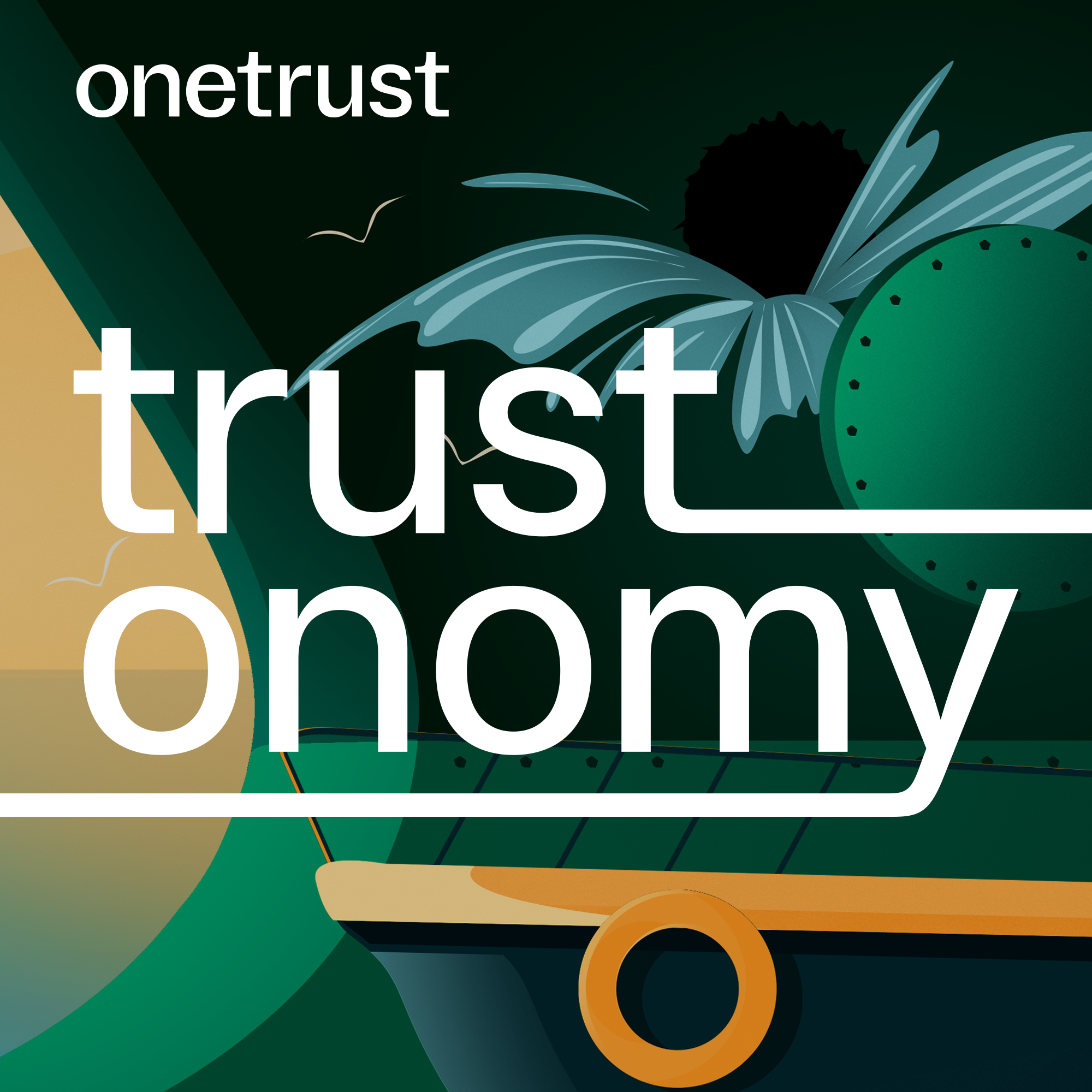
Episode 1: The safety shortcuts that sank a steamboat company
When you run a business, you build relationships with other businesses. They become your vendors and suppliers. But what happens when these third parties make decisions that put your customers and your business at risk?
September 28, 2023 26 min read
You might also like
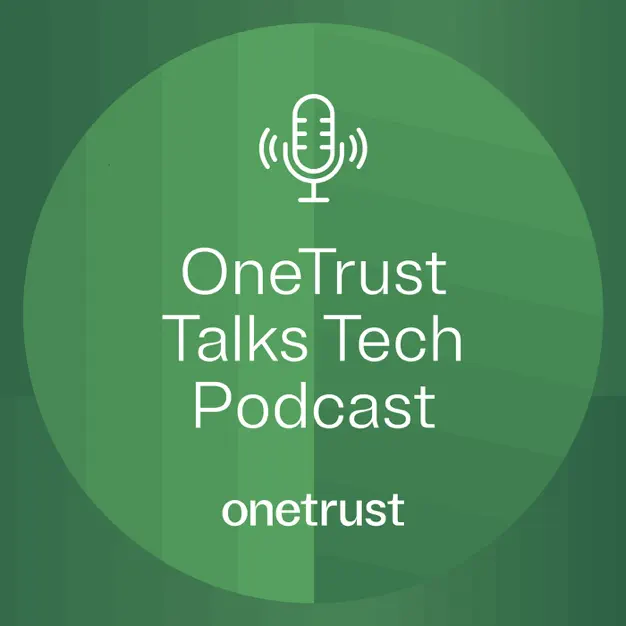
OneTrust Talks Tech
The OneTrust Talks Tech podcast is dedicated to providing listeners with weekly OneTrust product updates and information from industry experts on privacy, risk, compliance, ethics, and environmental topics.
Your partner in trust transformation
Top Searches
Privacy Matters
Our privacy center makes it easy to see how
we collect and use your information.
Your privacy
When we collect your personal information, we always inform you of your rights and make it easy for you to exercise them. Where possible, we also let you manage your preferences about how much information you choose to share with us, or our partners.
© {{CURRENT_DATE}} OneTrust, LLC. All Rights Reserved.
On-demand webinar coming soon...


